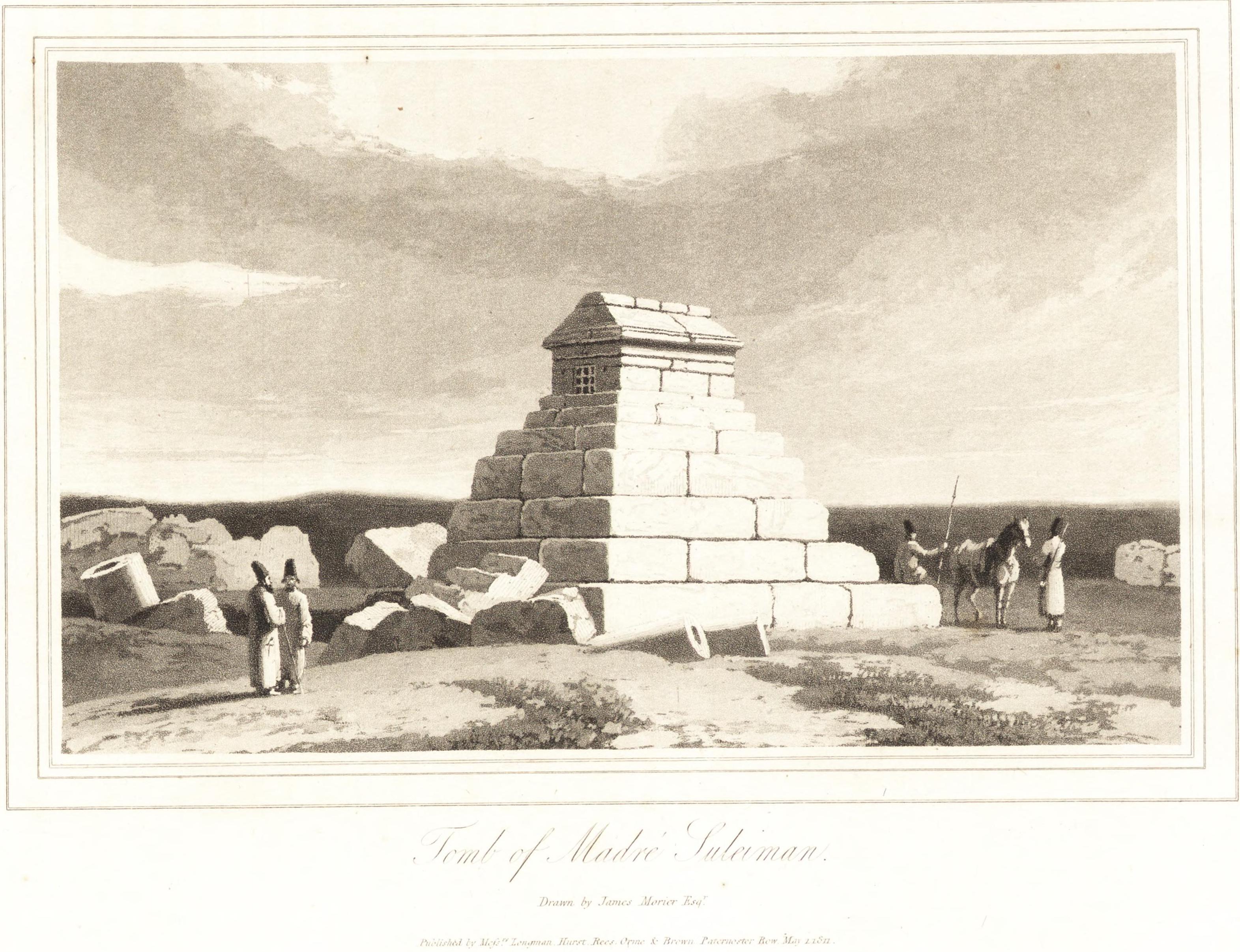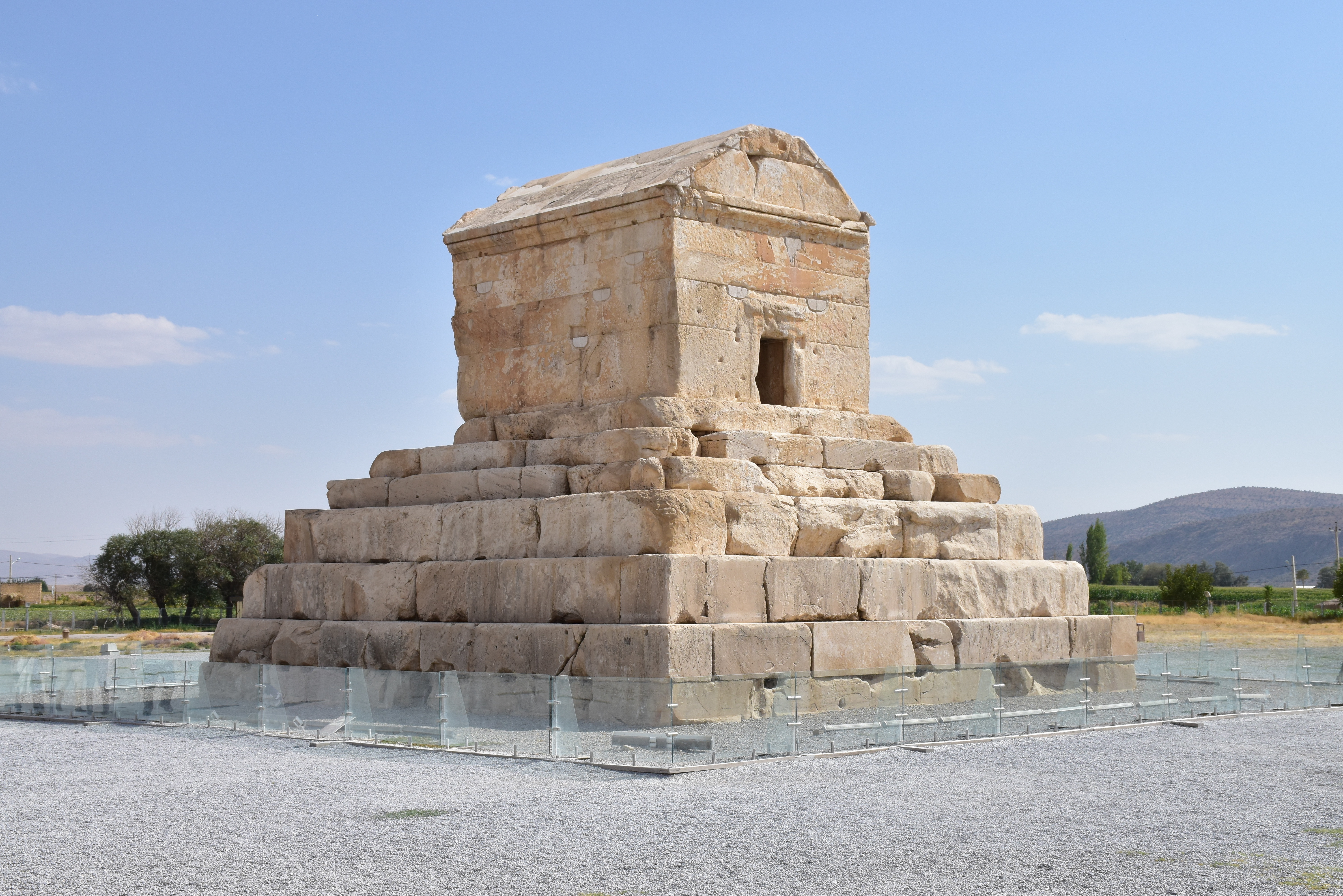|
Gur-e-Dokhtar
Gur-e Dokhtar ( fa, literally the daughter's tomb, گور دختر) is an ancient tomb located in the province of Bushehr in Iran. This grave has great similarities to Cyrus II's tomb in Pasargad, but is smaller. The tomb dates to the 6th century BC. It is possibly the tomb of Cyrus the Great's grandfather, Cyrus I. See also * Tomb of Cyrus * Cyrus the Younger * Teispes * Cyrus I * Atossa * Mandane of Media : Mandana of Media (Old Iranian: ''Mandanā'') was a Shahbanu of Medes, Media and, later, the Queen consort of Cambyses I of Anshan and mother of Cyrus the Great, ruler of Persia's Achaemenid Empire. Etymology The name ''Mandane'' is a Latinized ... References * https://fa.wikipedia.org/wiki/%DA%AF%D9%88%D8%B1_%D8%AF%D8%AE%D8%AA%D8%B1 {{Mausoleums in Iran Mausoleums in Iran Buildings and structures in Bushehr Province ... [...More Info...] [...Related Items...] OR: [Wikipedia] [Google] [Baidu] |
Cyrus I
Cyrus I (Old Persian: ''Kuruš'') or Cyrus I of Anshan or Cyrus I of Persia, was King of Anshan in Persia from to 580 BC or, according to others, from to 600 BC. Cyrus I of Anshan is the grandfather of Cyrus the Great, also known as Cyrus II. His name in Modern Persian is کوروش, ''Kurosh'', while in Greek he was called Κῦρος, ''Kȳros''. Cyrus was an early member of the Achaemenid dynasty. He was apparently a grandson of its founder Achaemenes and son of Teispes, king of Anshan. Teispes' sons reportedly divided the kingdom between them after his death. Cyrus reigned as king of Anshan while his brother Ariaramnes was king of Parsa. The chronological placement of this event is uncertain. This is due to his suggested, but still debated identification, with the monarch known as "Kuras of Parsumas". Kuras is first mentioned . In that year Shamash-shum-ukin, king of Babylon (668–648 BC), revolted against his older brother and overlord Ashurbanipal, king of Assyria (6 ... [...More Info...] [...Related Items...] OR: [Wikipedia] [Google] [Baidu] |
Tomb Of Cyrus
The Tomb of Cyrus ( – ''Ârâmgâh ye Kuroš Bozorg'') is the final resting place of Cyrus the Great, the founder of the ancient Achaemenid Empire. The mausoleum is located in Pasargadae, an List of archaeological sites in Iran, archaeological site in the Fars Province of Iran. It was first identified as Cyrus' tomb in modern times by James Justinian Morier, who compared the monument to that described in the writings of Greek historian Arrian. The mausoleum is a significant historical example of earthquake engineering as it is said to be the oldest Seismic base isolation, base-isolated structure in the world, allowing it great resilience against seismic hazards. It is one of the key List of World Heritage Sites in Iran, Iranian cultural heritage sites. On the 29th of October 2021, Iranian police barred people from visiting the mausoleum. The site of the tomb is shut down every year during Cyrus the Great Day following a Mohammad Reza Pahlavi, pro-monarchy 2016 Cyrus the Great R ... [...More Info...] [...Related Items...] OR: [Wikipedia] [Google] [Baidu] |
Dashtestan County
Dashtestan County ( fa, شهرستان دشتستان) is located in Bushehr province, Iran. The capital of the county is Borazjan. At the 2006 census, the county's population was 222,226, in 47,773 households. Retrieved 6 November 2022 At the 2011 census, the county's population was 229,425, in 57,562 households. At the 2016 census, the county's population was 252,047, in 70,943 households. The people of this district revolted against Nader Shah in September 1746. In June 1747 they captured Bushehr Bushehr, Booshehr or Bushire ( fa, بوشهر ; also romanised as ''Būshehr'', ''Bouchehr'', ''Buschir'' and ''Busehr''), also known as Bandar Bushehr ( fa, ; also romanised as ''Bandar Būshehr'' and ''Bandar-e Būshehr''), previously Antioc .... Administrative divisions References Counties of Bushehr Province {{Bushehr-geo-stub ... [...More Info...] [...Related Items...] OR: [Wikipedia] [Google] [Baidu] |
Iran
Iran, officially the Islamic Republic of Iran, and also called Persia, is a country located in Western Asia. It is bordered by Iraq and Turkey to the west, by Azerbaijan and Armenia to the northwest, by the Caspian Sea and Turkmenistan to the north, by Afghanistan and Pakistan to the east, and by the Gulf of Oman and the Persian Gulf to the south. It covers an area of , making it the 17th-largest country. Iran has a population of 86 million, making it the 17th-most populous country in the world, and the second-largest in the Middle East. Its largest cities, in descending order, are the capital Tehran, Mashhad, Isfahan, Karaj, Shiraz, and Tabriz. The country is home to one of the world's oldest civilizations, beginning with the formation of the Elamite kingdoms in the fourth millennium BC. It was first unified by the Medes, an ancient Iranian people, in the seventh century BC, and reached its territorial height in the sixth century BC, when Cyrus the Great fo ... [...More Info...] [...Related Items...] OR: [Wikipedia] [Google] [Baidu] |
Persian Architecture
Iranian architecture or Persian architecture (Persian: معمارى ایرانی, ''Memāri e Irāni'') is the architecture of Iran and parts of the rest of West Asia, the Caucasus and Central Asia. Its history dates back to at least 5,000 BC with characteristic examples distributed over a vast area from Turkey and Iraq to Uzbekistan and Tajikistan, and from the Caucasus to Zanzibar. Persian buildings vary from peasant huts to tea houses, and garden pavilions to "some of the most majestic structures the world has ever seen". In addition to historic gates, palaces, and mosques, the rapid growth of cities such as the capital Tehran has brought about a wave of demolition and new construction. Iranian architecture displays great variety, both structural and aesthetic, from a variety of traditions and experience. Without sudden innovations, and despite the repeated trauma of invasions and cultural shocks, it has achieved "an individuality distinct from that of other Muslim countries" ... [...More Info...] [...Related Items...] OR: [Wikipedia] [Google] [Baidu] |
Achaemenid Architecture
Achaemenid architecture includes all architectural achievements of the Achaemenid Persians manifesting in construction of spectacular cities used for governance and inhabitation (Persepolis, Susa, Ecbatana), temples made for worship and social gatherings (such as Zoroastrian temples), and mausoleums erected in honor of fallen kings (such as the burial tomb of Cyrus the Great). Achaemenid architecture was influenced by Mesopotamian, Assyrian, Egyptian, Elamite, Lydian, Greek and Median architecture. Boardman J. ''Persia and the West: An Archaeological Investigation of the Genesis of Achaemenid Art''. Thames & Hudson. 2000. p. 102-122. André-Salvini B. ''Forgotten Empire: The World of Ancient Persia''. University of California Press. 2005. p. 54. Talebian M. H. ''Persia and Greece: The role of cultural interactions in the architecture of Persepolis-Pasargadae''. 2008. The quintessential feature of Persian architecture was its eclectic nature with foreign elements, yet produ ... [...More Info...] [...Related Items...] OR: [Wikipedia] [Google] [Baidu] |
Ancient History
Ancient history is a time period from the beginning of writing and recorded human history to as far as late antiquity. The span of recorded history is roughly 5,000 years, beginning with the Sumerian cuneiform script. Ancient history covers all continents inhabited by humans in the period 3000 BCAD 500. The three-age system periodizes ancient history into the Stone Age, the Bronze Age, and the Iron Age, with recorded history generally considered to begin with the Bronze Age. The start and end of the three ages varies between world regions. In many regions the Bronze Age is generally considered to begin a few centuries prior to 3000 BC, while the end of the Iron Age varies from the early first millennium BC in some regions to the late first millennium AD in others. During the time period of ancient history, the world population was already exponentially increasing due to the Neolithic Revolution, which was in full progress. While in 10,000 BC, the world population stood at ... [...More Info...] [...Related Items...] OR: [Wikipedia] [Google] [Baidu] |
Tomb
A tomb ( grc-gre, τύμβος ''tumbos'') is a :wikt:repository, repository for the remains of the dead. It is generally any structurally enclosed interment space or burial chamber, of varying sizes. Placing a corpse into a tomb can be called ''immurement'', and is a method of Disposal of human corpses, final disposition, as an alternative to cremation or burial. Overview The word is used in a broad sense to encompass a number of such types of places of interment or, occasionally, grave (burial), burial, including: * Shrine, Architectural shrines – in Christianity, an architectural shrine above a saint's first grave (burial), place of burial, as opposed to a similar shrine on which stands a reliquary or feretory into which the saint's remains have been transferred * Burial vault (tomb), Burial vault – a stone or brick-lined underground space for multiple burials, originally vault (architecture), vaulted, often privately owned for specific family groups; usually benea ... [...More Info...] [...Related Items...] OR: [Wikipedia] [Google] [Baidu] |
Pasargadae
Pasargadae (from Old Persian ''Pāθra-gadā'', "protective club" or "strong club"; Modern Persian: ''Pāsārgād'') was the capital of the Achaemenid Empire under Cyrus the Great (559–530 BC), who ordered its construction and the location of his tomb. Today it is an archaeological site and one of Iran's UNESCO World Heritage Sites, about to the northeast of the modern city of Shiraz. History Pasargadae was founded in the 6th century BCE as the first capital of the Achaemenid Empire by Cyrus the Great, near the site of his victory over the Median king Astyages in 550 BCE. The city remained the Achaemenid capital until Darius moved it to Persepolis. The archaeological site covers 1.6 square kilometers and includes a structure commonly believed to be the mausoleum of Cyrus, the fortress of Toll-e Takht sitting on top of a nearby hill, and the remains of two royal palaces and gardens. Pasargadae Persian Gardens provide the earliest known example of the Persian '' chahar ba ... [...More Info...] [...Related Items...] OR: [Wikipedia] [Google] [Baidu] |
Cyrus The Younger
Cyrus the Younger ( peo, 𐎤𐎢𐎽𐎢𐏁 ''Kūruš''; grc-gre, Κῦρος ; died 401 BC) was an Achaemenid prince and general. He ruled as satrap of Lydia and Ionia from 408 to 401 BC. Son of Darius II and Parysatis, he died in 401 BC in battle during a failed attempt to oust his elder brother, Artaxerxes II, from the Persian throne. The history of Cyrus and of the retreat of his Greek mercenaries is told by Xenophon in his ''Anabasis''. Another account, probably from Sophaenetus of Stymphalus, was used by Ephorus. Further information is contained in the excerpts from Artaxerxes II's physician, Ctesias, by Photius; ''Plutarch’s Lives'' of Artaxerxes II and Lysander; and Thucydides' ''History of Peloponnesian War''. These are the only early sources of information on Cyrus the Younger. Biography According to Xenophon, Cyrus the Younger was born after the accession of his father in 424 BC. He had an elder brother, Arsicas (whose name changed to Artaxerxes II when he a ... [...More Info...] [...Related Items...] OR: [Wikipedia] [Google] [Baidu] |
Teispes
Teïspes (from Greek ; in peo, 𐎨𐎡𐏁𐎱𐎡𐏁 ''Cišpiš''; Akkadian: 𒅆𒅖𒉿𒅖 ''Šîšpîš'',Kent (1384 AP), page 394 Elamite: Zi-iš-pi-iš) ruled Anshan in 675–640 BC. He was the son of Achaemenes of Persis and an ancestor of Cyrus the Great. There is evidence that Cyrus I and Ariaramnes were both his sons. Cyrus I is the grandfather of Cyrus the Great, whereas Ariaramnes is the great-grandfather of Darius the Great. According to 7th-century BC documents, Teispes captured the Elamite city of Anshan, speculated to have occurred after the Persians were freed from Median supremacy, and expanded his small kingdom. His kingdom was, however, a vassal state of the Neo-Assyrian Empire (911–605 BC). He was succeeded by his second son, Cyrus I. Name The Old Persian version of the name is ''Čišpiš''; Walther Hinz and Heidemarie Koch interpret it as ''*Čaišpiš'', but this appears to be incorrect. Rüdiger Schmitt considers the name "probably Iranian", whereas ... [...More Info...] [...Related Items...] OR: [Wikipedia] [Google] [Baidu] |


.jpg)




